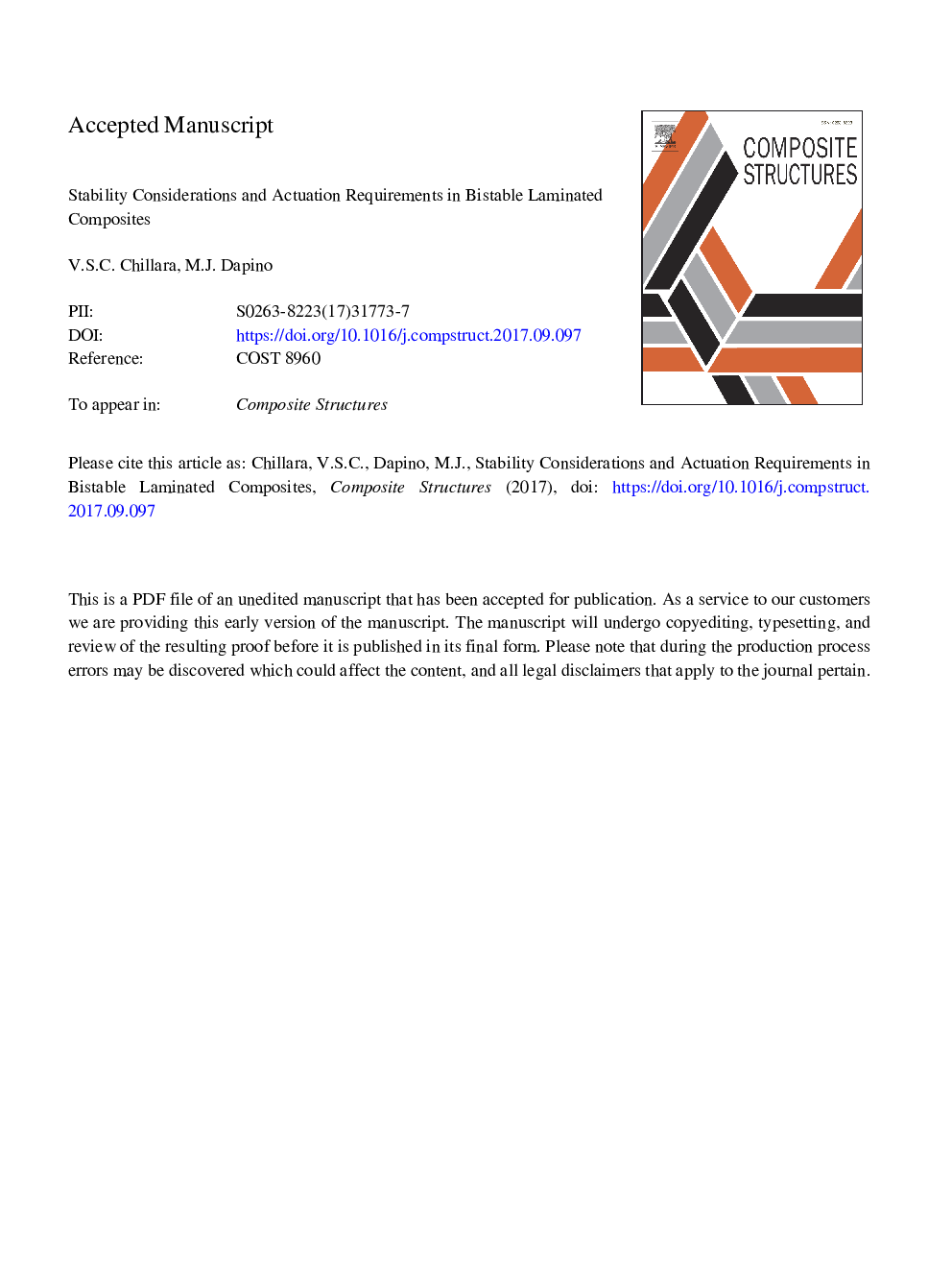| Article ID | Journal | Published Year | Pages | File Type |
|---|---|---|---|---|
| 6705039 | Composite Structures | 2018 | 30 Pages |
Abstract
Laminated composites with a core layer sandwiched between orthogonal mechanically-prestrained laminae exhibit two weakly-coupled cylindrical shapes where each shape is influenced only by one prestrained lamina. This study investigates the domain of bistability and actuation requirements of such bistable laminated composites. An analytical model is constructed as follows: point-wise displacements and areal dimensions are scaled; strain energy and actuation work are computed using high-order displacement polynomials; and net energy is minimized using the Rayleigh-Ritz method to calculate stable shapes as a function of actuation force. Shape transition is shown to be a multi-stage phenomenon through an experimental procedure involving friction-free tensile tests and 3D motion capture. The simulated actuation energies agree with measurements within 12%. Square laminates are shown to be bistable only when the ratios of laminae prestrains are greater than 0.2. The aspect ratio limit for bistability can be improved by maximizing both prestrains while maintaining a prestrain ratio of one. It is shown that in-plane forcing requires 100 times more energy than an equivalent moment. A parametric study reveals that the composite's performance parameters are more sensitive to the core's thickness than its modulus; the sensitivity of actuation energy is minimal relative to that of deformation and stiffness.
Related Topics
Physical Sciences and Engineering
Engineering
Civil and Structural Engineering
Authors
V.S.C. Chillara, M.J. Dapino,
